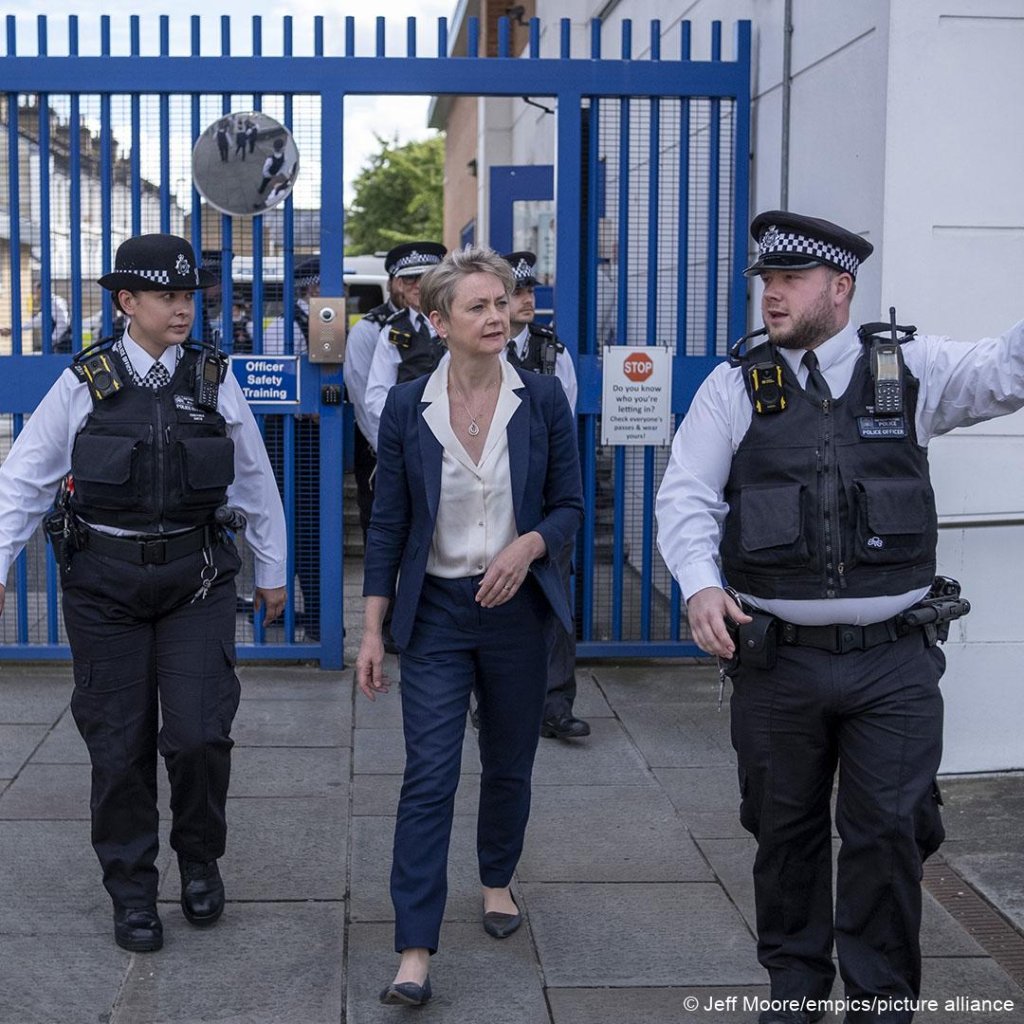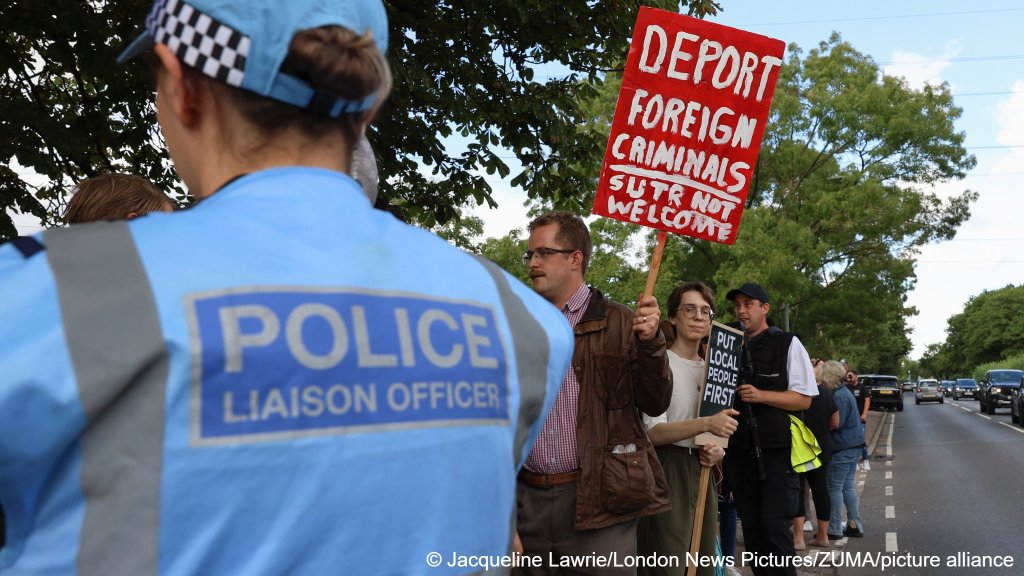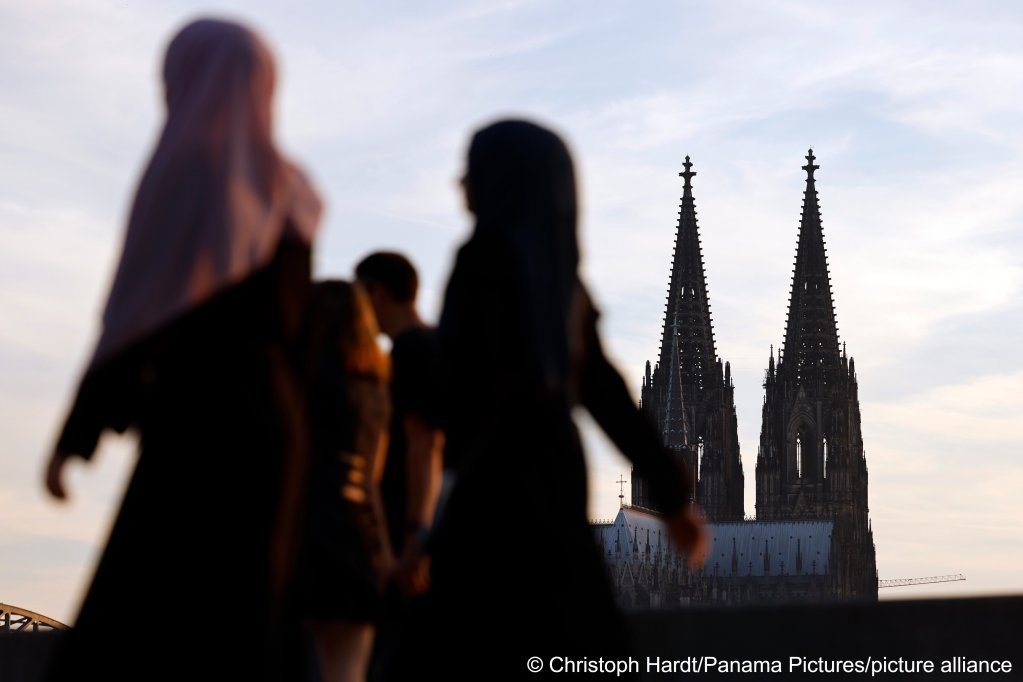A debate is raging in the UK over whether migrants have a greater propensity to perpetrate sexual and violent crimes than other parts of the population. Those who claim that violence is linked to cultural influences cite crime statistics purporting to prove their point. That is what some right-wing politicians have been doing this week in Britain. InfoMigrants takes a look at this complicated issue.
Recent headlines in Britain have reignited a heated debate over sexual crimes and the suspected perpetrators, who are reportedly migrants.
On Monday (August 4), the British public broadcaster BBC reported that two men appeared in court charged in connection with the rape of a 12-year-old girl in Warwickshire in the middle of the country. The suspects were reported to be two Afghan men who are alleged to be asylum seekers. The local police have not however confirmed this, saying that reporting the ethnicity of a suspect does not follow their current protocol.
The case though has been raised on several occasions by the right-wing British politician and leader of the anti-migrant Reform party, Nigel Farage. He claims that police and the media are trying to "cover up" a case where the suspects are migrants.

Now, Britain's Home Secretary (Interior Minister) Yvette Cooper, from the Labour party, has spoken out and agreed that "more transparency is needed" linked to the guidance for police when sharing the immigration status and ethnicity of crime suspects. Cooper told the BBC on August 5 that "we do think the guidance [for police] needs to change." Adding that local people "do need to have more information."
Building unrest
In July, protests gradually built in another part of the country, Epping, just east of London, after an incident involving a 38‑year‑old Ethiopian, reportedly charged with three counts of sexual assault, one of which was inciting a girl to engage in sexual activity. The girl in question in this case is reportedly 14 years old.

Following the suspect's arrest, local people, also joined by activists and supporters from across the country, took to the streets calling on the police and authorities to "protect our girls," and make the streets safe again. Many of the demonstrations and counter-demonstrations centered around the Bell hotel, which is believed to be housing asylum seekers.
Many in the UK are also angry by what they see as a disproportionate amount of money being spent on asylum seeker accommodation when many of those protesting are struggling economically. The current Labour government is under pressure to try and address both its spending and migration policy, as polls suggest it is losing out to the Reform party. Similar protests also took place in Manchester and London.
The two sexual assault incidents are separate and isolated. But as evidenced by the nationwide riots that broke out following a stabbing incident in Southport last summer, such cases carry the potential to trigger moral panic. Moral panic that is primed to become moral outrage fuels right-wing, anti-migrant movements that are eager to frame migration and migrants as a general threat to public safety.
Read AlsoUK: Are fears of a second summer of anti-migrant unrest unfounded?
The Role of Bias and Profiling
At the beginning of this week, the Shadow Justice Secretary, Conservative MP Robert Jenrick cited statistics from the Centre for Migration Control (CMC), a group advocating for reduced immigration.
Jenrick claimed that "40 percent of sexual crimes in London last year were committed by foreign nationals." However, according to the left-leaning Guardian newspaper, this figure cannot be stood up if cross-checked against statistics from London's Metropolitan Police.
That figure, according to police data referred to people "proceeded against" for sexual offenses—meaning charged, not convicted. Figures show a large gap between prosecutions and convictions: 14,242 defendants for sexual offenses in 2024 compared to 8,098 convictions. This means that those charged with a crime were not found guilty of committing the offense, as Jenrick had claimed.
Jenrick also said Afghans and Eritreans are "20 times more likely" to be convicted of sexual crimes than Britons. This statistic, repeated by Reform UK’s chair Zia Yusuf, is based on outdated 2021 population estimates and crime data from 2021–2023. Both Afghan and Eritrean migration has grown substantially due to political instability and conflict in their regions.
Some criminologists warn that the apparent "over-representation" of migrants in crime figures could be a reflection of racial profiling and systemic bias. An EU-wide study in 2022 found that ethnic minorities often face disproportionate police checks, potentially inflating suspect data in certain groups.
In the UK, this is echoed in stop-and-search patterns. Between 2019–2020, Black individuals were nine times more likely to be stopped by police than White people, while Asian individuals were twice as likely.
Violence-related masculinity
Forensic psychiatrist Frank Urbaniok has been studying sexual offenders of all backgrounds for decades. The results of his analysis of crime statistics in Germany, Austria, and Switzerland, and the types of crimes committed by foreigners, he believes, does however indicate links between certain cultural backgrounds and a propensity to violence. His views are often heavily criticized by those on the left. But he has published a book on the matter nevertheless.
Speaking to the German newspaper, Frankfurter Allgemeine Zeitung FAZ, on August 3, Urbaniok explained that cultures that appear to prioritise masculinity and strength mean that some countries and cultures are "over-represented" in crime statistics, and that this over representation, according to him, cannot simply be explained away by saying that migrants are also predominantly young and male, which are the most likely demographic to commit a crime in the first place.
Urbaniok said, "In other words, the use of violence to achieve goals is socially legitimized much more strongly in some societies." These social and culturally legitimized forms of violence can, believes Urbaniok, be passed down even to the second or third generation of someone who might have a family history of migration.

Urbaniok added that power structures around gender are also a factor. In cultures where women are seen as subordinate, the use of violence against them is rationalized or justified as somehow warranted.
The forensic psychiatrist is quick to point out, he tells the FAZ, that he is not against migrants, that they can enrich society but that much more emphasis needs to be placed on integration and the real acceptance of the rules of the new host society. Learning the language and education are key, thinks the psychiatrist, for avoiding problems further down the line.
One of the biggest risk factors, in determining who might go on to commit a crime, irrespective of their ethnicity or culture, is a non-acceptance of the rules of society, explains Urbaniok. "Dissociation, where rules are just not accepted, can lead to ruthless behavior," thinks Urbaniok. People who are "quick to anger" or who have a "delinquent world view where violence is justified," can also be problematic.
Old racist tropes, new interpretations
According to other experts, the figure of the young male migrant of color has long been constructed as a symbol of danger, particularly sexual danger.
Research by the Council for European Studies (CES) traced how the portrayal of the non-European male immigrant as a sexual threat to European women has gained traction. This framing of the "rapefugee" or racialized sexual predator intensified after reports of mass sexual assaults in Cologne, Germany.
Specifically, the study cited that on New Year’s Eve 2015–2016, groups of men reportedly robbed and sexually assaulted hundreds of women in Cologne. Accounts differed widely, especially on the number of perpetrators and victims; however, the profile of the perpetrator was constant: male, non-European, Arab, North African.

The incident became a flashpoint that ignited pre-existing sexualized fears about migrants, already present in media and public discourse. CES notes that this racialized narrative is not a single story. It is told and retold, and protagonists are changed (Muslim, Black, refugee) to suit varying contexts and political purposes. Social media provides the amplification, reach, and repetition that false narratives and disinformation need to become viral and incendiary.
As Sharmila Parmanand, Assistant Professor at the London School of Economics, explains, the issue is not only disinformation. It is that such disinformation resonates because it falls on "fertile ground" shaped by already entrenched prejudices.
"Across countries and historical periods, Black and Brown men have been cast as sexual threats to women and children — especially white women and children. This stereotype has been used to justify racist violence, migration restrictions, and even military interventions abroad," Parmanand explained to InfoMigrants, citing historical events such as lynchings in the Jim Crow US South and wars in Afghanistan, Iraq, and parts of the Middle East in the name of 'saving' women.
Read AlsoWhat is behind the anti-migrant clashes in the UK?
Deeply embedded in the cultural imagination
According to Parmanand, "When a young man of color — particularly if perceived as a migrant — is implicated or falsely implicated in an incident, the public is more primed to believe narratives of danger and violence."
Now, when the victim is seen as a girl-child, long-standing tropes can more easily be exploited by racist groups. "The image of the endangered girl-child, the symbol of innocence and vulnerability, has long been weaponized to justify racist policies and vigilante actions, often sidelining the actual needs and voices of survivors."
Gender-based violence occurs across all races, classes, citizenship statuses, and religions, Parmanand stressed. Disproportionately focusing on racialized migrant men not only perpetuates racist harm but also obscures the wider issue of systemic gender-based violence. Evidence does not support the claim that migrants are more likely to commit sexual or gender-based violence; in fact, most studies find they are not overrepresented among perpetrators.
While safety and security in communities and the protection of vulnerable groups are legitimate concerns, they should not be selective.

"We have to ask — safe from whom, and according to whose definition of threat? If concern for girls only surfaces when the accused is a racialized migrant man, and not when abuse happens in the home, school, or church, then it’s not really about protecting girls — it’s about policing the boundaries of race and nation," thinks Parmanand. "We must be able to talk about safety without reproducing racist logics, and fight gender-based violence in ways that don’t scapegoat already marginalized groups."
